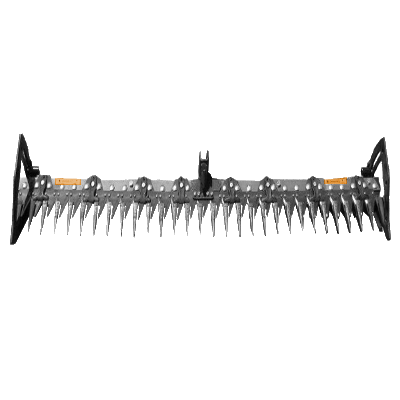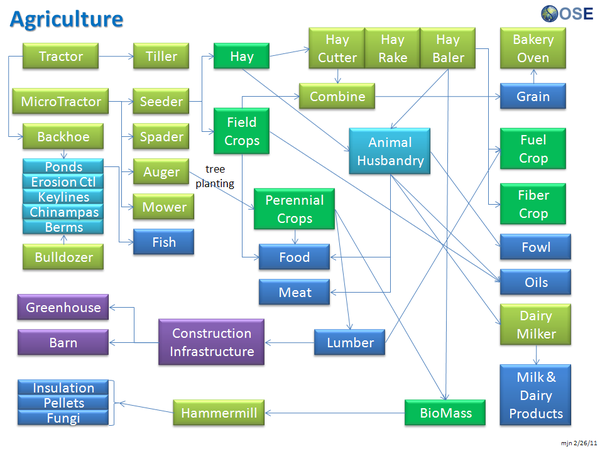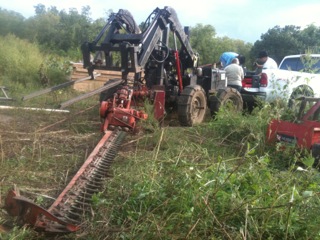Hay Cutter: Difference between revisions
OpenIDUser70 (talk | contribs) |
(added LANG template) |
||
| (One intermediate revision by one other user not shown) | |||
| Line 1: | Line 1: | ||
{{OrigLang}} | |||
{{GVCS Header}} | {{GVCS Header}} | ||
| Line 41: | Line 43: | ||
*[[Hay Baler]] | *[[Hay Baler]] | ||
*[[Hay Rake]] | *[[Hay Rake]] | ||
[http://en.wikipedia.org/wiki/Mower Wikipedia:Mower] | [http://en.wikipedia.org/wiki/Mower Wikipedia:Mower] | ||
{{GVCS Footer}} | {{GVCS Footer}} | ||
Latest revision as of 10:50, 9 March 2017
| Hay Cutter | ||
|---|---|---|
| Home | Research & Development | Bill of Materials | Manufacturing Instructions | User's Manual | User Reviews | 
| |
Overview
A hay cutter is a device that cuts grass, hay, straw, or other light biomass. It is part of haying equipment, haybines, silage equipment, mowers, and agricultural combines.
This should really be called a mower. More specifically, a reciprocating mower, sickle mower, or finger-bar mower. A "hay cutter" can be mistaken for something more like a wood chipper that chews up biomass and spits it out a chute.
Details
A cutter has a number of moving parts and is subject to failure. Open source, modular hay cutters solve the need for easy self-maintenance and adaptation to many devices, from combines to balers, reducing infrastructure costs. The goal is a machine that fully meets OSE Spec
Product Ecology
Made with
 Induction Furnace - Steel
Induction Furnace - Steel CNC Torch Table - Cut parts
CNC Torch Table - Cut parts
Uses
Creates
- Hay
Components
- QA Plate
- Mounting Frame
- Blades
- Hinge
Study of Industry Standards
OSE hay cutter is studying the industry standards with this hydraulic-retrofit of a hay cutter:
See Also



